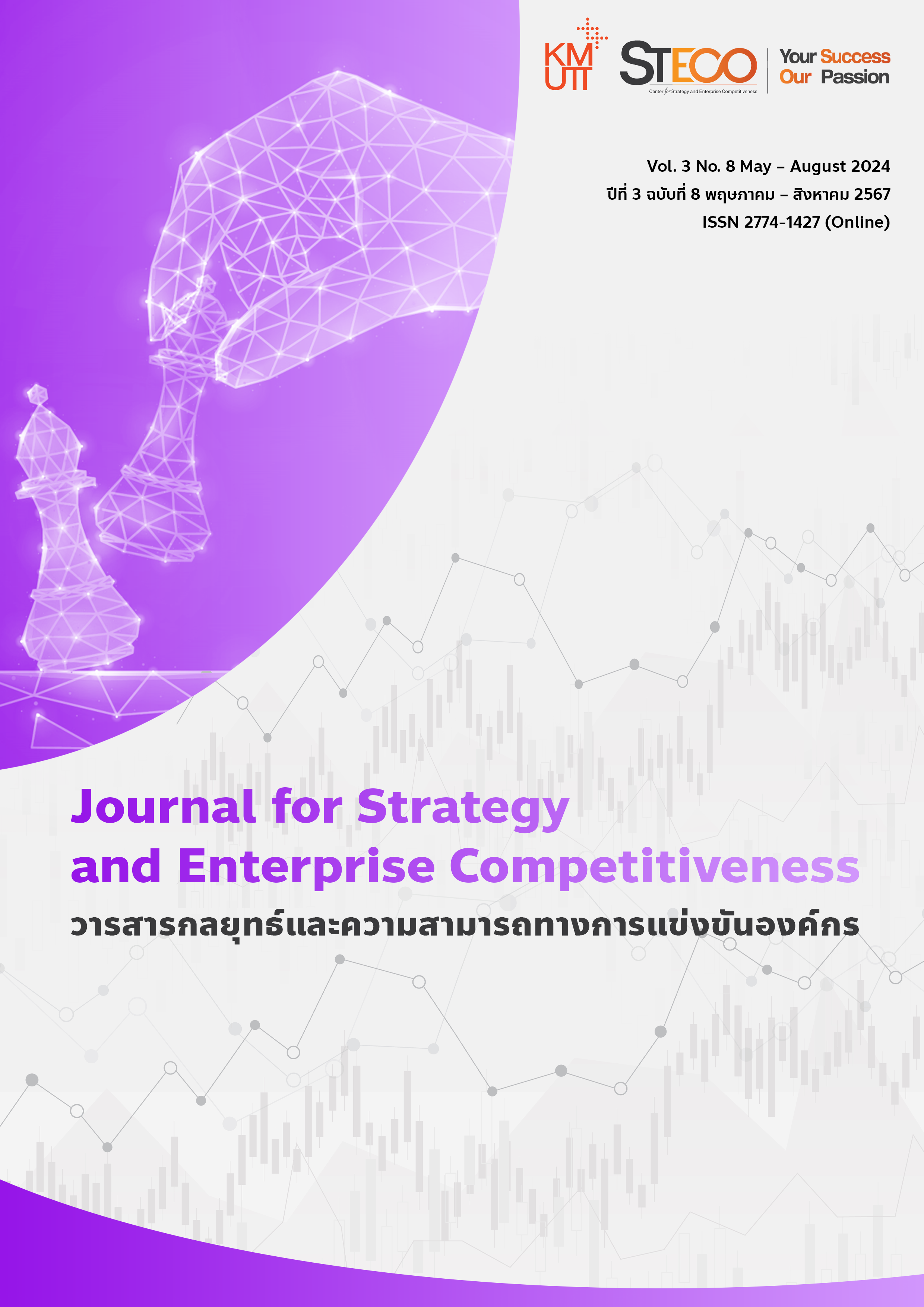Strategies for Integrating Local Liquor Products into Modern Trade Channels to Enhance the Economic Sustainability of Community Enterprises
Keywords:
community enterprises, distribution channels, modern trade, business modelAbstract
This research examines the development of local liquor as a quality local product to enhance market expansion opportunities and increase sales for local entrepreneurs. The objectives of the study are: 1) to analyze the external and internal environments affecting local liquors, 2) to develop a business model tailored for local liquors, and 3) to propose guidelines for enhancing the potential of local liquors to penetrate modern trade markets. This qualitative research involved data collection through in-depth interviews.
The study found several strengths in the business environment, including the use of raw materials sourced from the community or purchased from local suppliers, brand diversity, and attractive, modern packaging. However, weaknesses were also noted, such as issues with quality control and the lack of product development to enhance quality. The research highlighted threats including regulatory challenges, competition, and weather-related factors. On the other hand, opportunities were identified in business expansion, collaboration, participation in trade fairs, and the potential to grow the business through modern trade.
To upgrade the potential of local liquor for modern trade, the study suggests elevating the original Sakthong Phrae liquor, a best-seller, to a premium grade, developing health-oriented formulas, and building a strong brand by emphasizing the brand's story and creating a distinct product identity. These strategies are expected to facilitate business expansion into both domestic and international markets, enhancing the economic sustainability of community enterprises.
References
Apimahachokpokin, B., Intakhan, P. and Noithonglek, T. (2013). Marketing Strategy and Service Quality Influence the Customers’ Loyalty of Modern Retailers in Muang Lampang District, Lampang Province. Lampang Rajabhat University Journal, 1(2), 111-127.
Arayarangsarit. S., Ngamsomsuke. K., & Pramualphisuth. J. (2005). Production and Marketing Situations of Local Fruit Wine and Whisky in the Upper North. Journal of Agriculture, 21(2), 173-183.
Benzaghta, M. A., Elwalda, A., Mousa, M. M., Erkan, I., & Rahman, M. (2021). SWOT analysis applications: An integrative literature review. Journal of Global Business Insights, 6(1), 54-72.
Gretzky, W. (2010). Strategic planning and SWOT analysis. Essentials of strategic planning in healthcare, 1(12), 91-108.
Helms, M. M., & Nixon, J. (2010). Exploring SWOT analysis–where are we now? A review of academic research from the last decade. Journal of strategy and management, 3(3), 215-251.
Kasikorn Research Center. (2024). Retail in 2024 expected to grow 3.0%, but Thai manufacturers compete fiercely with products from China (Issue 3457). Retrieved from https://www.kasikornresearch.com/th/analysis/k-econ/business/Pages/Retail-CIS3457-14-02-2024.aspx
Kotler, P., Armstrong, G., Saunders, J., & Wong, V. (2001). Marketing in a changing world. Underst. Bus.: process, 6, 69-90.
Lapawattanaphun, B. (2023). Marketing Communication Strategies to Enhance Competitiveness from The Effect of COVID-19 Crisis Through The Perspectives of High-Ranking Executives In Modern Trade Business. Journal of Communication Arts, 41(2), 37-58.
Levy, M., & Weitz, B. A. (2004). Retailing management. McGraw-Hill/Irwin.
Murray, A., & Scuotto, V. (2015). The business model canvas. Symphonya. Emerging Issues in Management, 94-109.
Nunphoobal, S. (2018). Myth of Liquor in Context of Thai Society. Journal of Humanities and Social Sciences Loei Rajabhat University, 1(2), 97-106
Poungsuk. P., Sangwong. S., & Supadit. T. (2006). Factors Affecting to Good Practices in Producing Traditional Liquor. Journal of Social Development, 8(2), 143-174.
Sparviero, S. (2019). The case for a socially oriented business model canvas: The social enterprise model canvas. Journal of social entrepreneurship, 10 (2), 232-251.
Sura Thai. (2011). Production of local liquor. Retrieved from https://surathai.wordpress.com/2011/05/10/producesura/

Downloads
Published
How to Cite
Issue
Section
License
Copyright (c) 2024 Journal for Strategy and Enterprise Competitiveness

This work is licensed under a Creative Commons Attribution-NonCommercial-NoDerivatives 4.0 International License.
The opinions appearing in the content of articles of Journal for strategy and enterprise competitiveness. It is the opinion and responsibility of the article author. It is not the opinion and responsibility of the Center for strategy and enterprise competitiveness, King Mongkut's University of Technology Thonburi
Articles, information, content and images, etc., in the Journal for strategy and enterprise competitiveness. It is the exclusive copyright of the Center for strategy and enterprise competitiveness, King Mongkut's University of Technology Thonburi. If an individual or entity wants to distribute all or part of the content or for any action must obtain written permission from the Center for Strategy and enterprise Competitiveness, King Mongkut's University of Technology Thonburi.


